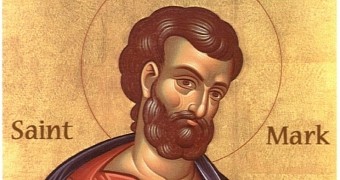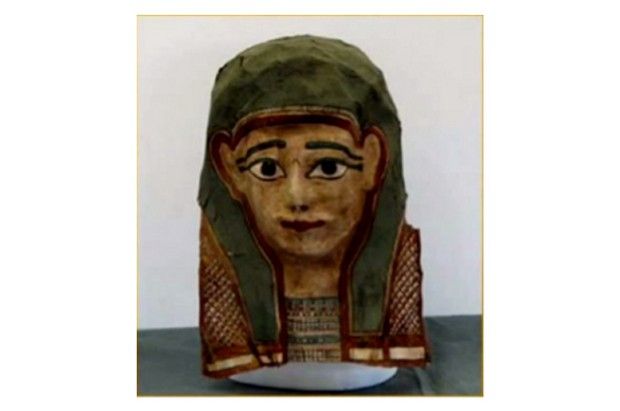Some might think that there is no way Egyptian mummies and ancient gospel texts could ever cross paths, but it just so happens that this isn't really the case. In fact, archaeologists say that, as surprising as this may sound, a mummy mask discovered not too long ago has a gospel fragment written on it.
The mummy mask, similar to the one featured in the photo below, is estimated to have been created before the year 90. Seeing how pretty much all the seriously old gospel copies thus far documented date back to the 2nd century, this makes the fragment on it one of the oldest religious texts ever.
How a gospel fragment ended up being part of a mummy mask
According to Craig Evans, a professor of New Testament studies at the Acadia Divinity College in the town of Wolfville in Nova Scotia, Canada, evidence indicates that the gospel fragment became part of the mask when the papyrus it was written on was reused to make the burial artifact.
Apparently, papyrus was pretty expensive in ancient Egypt. Hence, those less fortunate of the bunch often reused sheets, especially when it came to making burial masks for themselves. True, gold was also used to make mummy masks, but this honor was reserved for pharaohs.
Commoners quite often made their burial masks from reused papyrus glued in the form of a human face and then painted. Apart from this fragment of the Gospel of Mark dating back to the 1st century, archaeologists have so far recovered business papers and even personal letters from mummy masks.
It is understood that, in some cases, folks in ancient Egypt combined papyri having about a couple dozen different texts written on them to make just one mummy mask. To recover these texts, researchers must break the burial artifacts apart.
The fragment will soon hit the public eye, researchers promise
Live Science tells us that, later this year, Acadia Divinity College researchers Craig Evans and colleagues will publish a collection of texts obtained from the centuries-old mummy masks that they have until now had the chance to study.
The fragment of the Gospel of Mark believed to have been written on papyrus before the year 90 and to, therefore, constitute one of the oldest surviving copies of the gospels will be included in this collection. Once published, the fragment is expected to help researchers better understand the origins of Christianity.

 14 DAY TRIAL //
14 DAY TRIAL // 

